An ancient tomb discovered in Baoji City in Shaanxi, China, back in 2013, is ripe with spoils of war. The crypt is filled with bronze ceremonial vessels etched with intricate designs, and alongside the artifacts, archaeologists found a badly decomposed body.
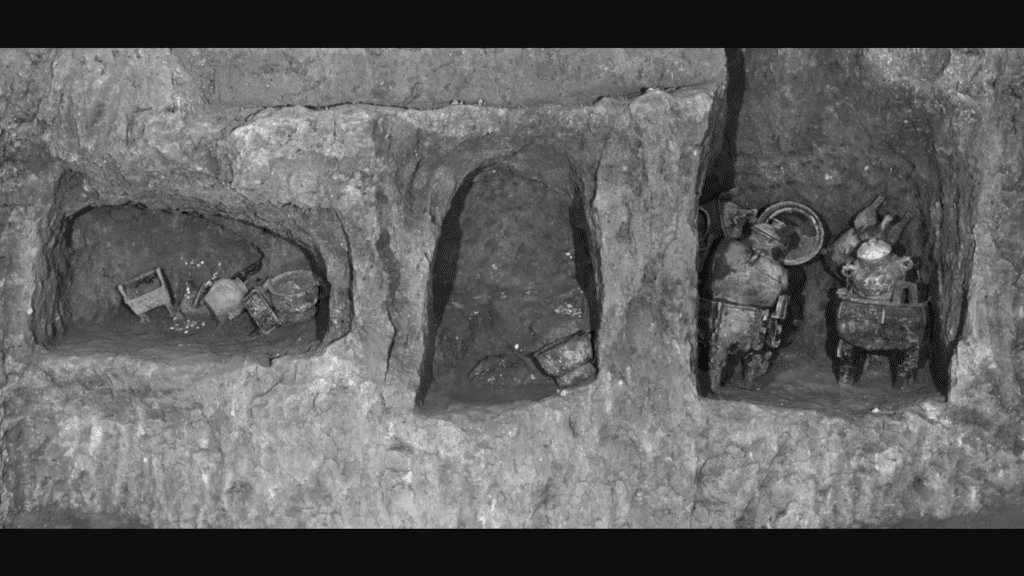
The hoard of vessels, most of which are believed to be ‘food vessels’, include a four-handled tureen, a type of deep dish used to serve soup. It’s a lavish piece, decorated with 192 spikes and engravings of dragons and birds, alongside 24 etchings of bovine heads.
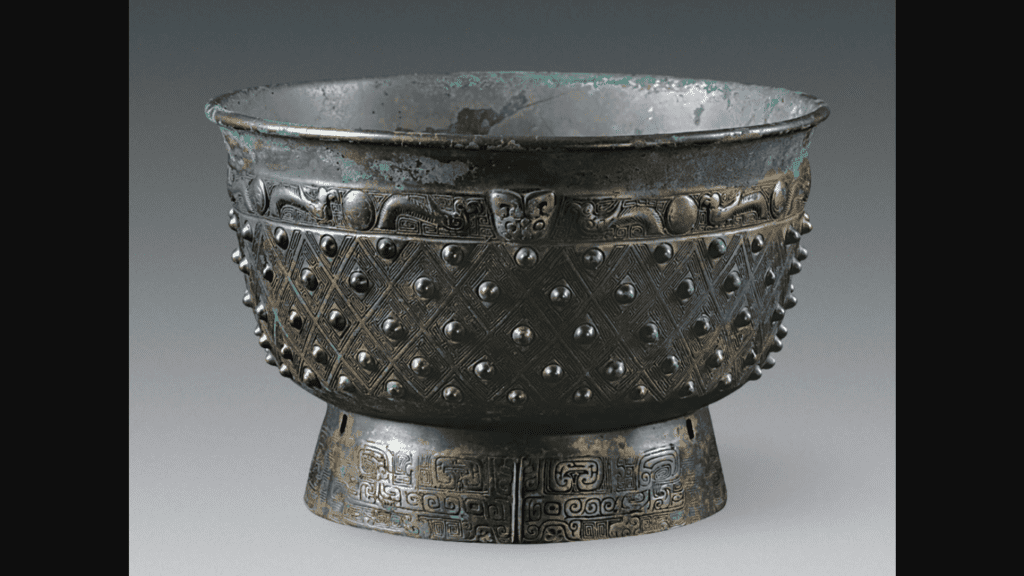
Two wine vessels shaped as deer and engraved with complex designs were also discovered in the M4 tomb. The skeleton found in the tomb is badly decomposed and archaeologists could not determine his identity. Still, the person buried there must have been a chieftain or someone of great importance.
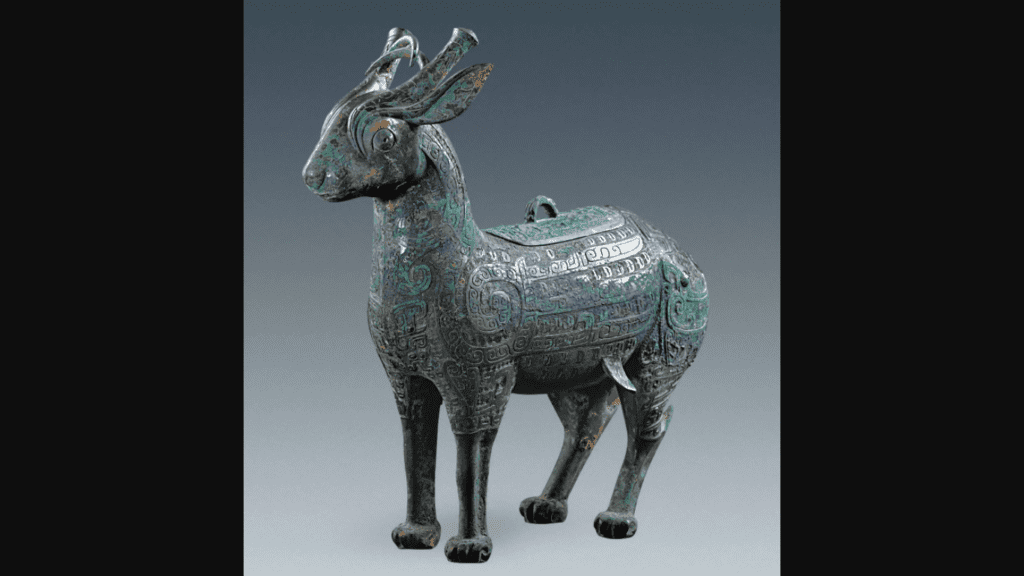
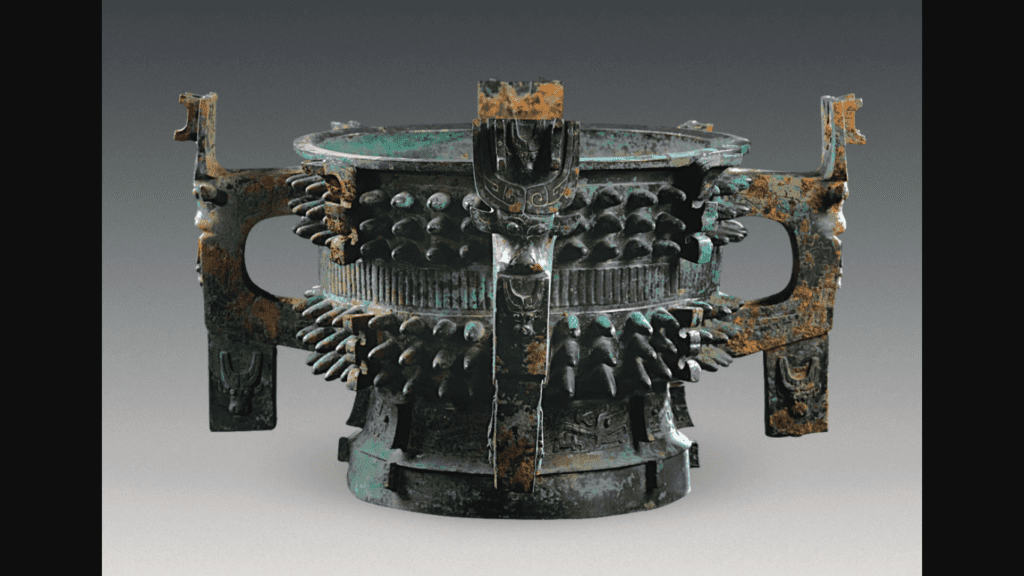
The team referred to the vessels as “ritual vessels,” saying that if they were ever used to actually serve food, it would only have been during religious or burial ceremonies. They were likely spoils of war, gifted to the person buried in the tomb, they note.
“The occupant of Tomb M4 was most likely of elite status, and could potentially be a high ranking chief or the spouse of a chief,” wrote the team led by Zhankui Wang.
To the victor the spoils
At the time the tomb was sealed, 3,100 years ago, the Zhou dynasty was battling their rival, the Shang. They would eventually overcome their enemy and seize control of the Shang lands. Given that several of the vessels discovered in M4 are adorned with inscriptions, some of which are the names of different Shang clans, the team believes the vessels are “originally from multiple clans of the Shang people” seized in the conflict.
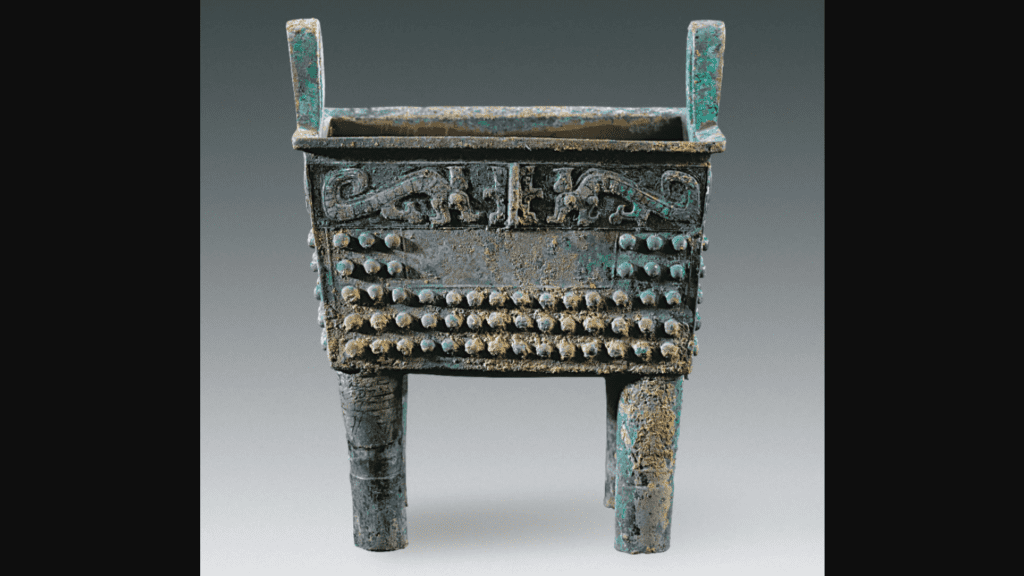
The bronze booty was then gifted to the person interred in M4, the team says.
“After conquering the Shang dynasty, the Zhou king distributed the plundered war spoils to the military officers with great achievements, and these spoils usually included bronze vessels,” they wrote.
A paper about the tomb discovery was published in Chinese in 2016, in the journal Wenwu. The article was recently translated into English and published in the journal Chinese Cultural Relics.
A journal article about the tomb discovery was published in Chinese in 2016, in the journal Wenwu. The article “The Shang (ca. 1600–1046 BC) and Zhou dynasty (ca. 1045–256 BC) Shigushan cemetery in Baoji, Shaanxi Province” has been translated into and published in the journal Chinese Cultural Relics.


